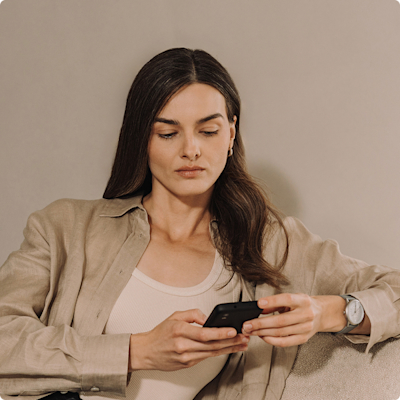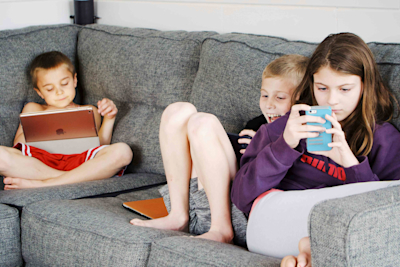
What Is Gaga Dance Style?
Artistic Director of Batsheva Dance Company and Batsheva Ensemble describes the unique movement vocabulary he developed which is now the daily training for the dancers at Batsheva.
Directed by: Tomer Heymann Mr. Gaga Official Trailer 1 (2017) - Documentary
Have you heard of Gaga dance? We first learned about it in a documentary about Ohad Naharin, a choreographer and one of the great dance minds of our time, the creator of Gaga dance. Impressed by the documentary, we’ve decided to share what we’ve learned and our thoughts about it with you.
Watching ‘Mr. Gaga’ was an amazing opportunity to get a glimpse into the studio and into the mind of Ohad Naharin. The filmmakers were able to follow him for a very long time and the filming of this documentary took eight years.
What is this mysterious Gaga dance?
Gaga, a movement language created by Ohad Naharin, is an intriguing cultural and artistic phenomenon that continues to gain popularity in the contemporary dance world. It is also a philosophy of working with the body, a comprehensive training regimen for dancers and a form of physical activity available for people who are professionally unrelated with movement.
It is largely based on working with mental images that go directly to the central headquarters of the body — the nervous system. When stimulated by the images, the body can break out of motor patterns, leave the comfort zone and let go of repeatability. Effective mental images have to act on the nervous system just as bait does to a fish — attract attention, arouse appetite and provoke action.
It is best to use visions that in some way are overly sharp, precise and dynamic — so that the body can experience the image. In Gaga there are images such as a snake in the spine, a ball traveling all over the body, bones moving under the skin or a body boiling like spaghetti sauce.
Gaga is not a technique. It is a language, or a system of signs and a system for their creation. It is used to communicate between the dancer and his body, the choreographer and the dancers, the teacher, the learners, the performers and the audience.
Naharin had set the Gaga framework, but the language is still evolving and transforming under the influence of its users. Gaga teachers are obliged to come to Tel Aviv to update their knowledge and to share what they have discovered through their practice. In doing so, they create and spread a common language around the world.
There has never been and probably never will be a Gaga dictionary or manual. Naharin takes care of the purity and — despite the universal fascination with this phenomenon — elitism of the Gaga language. Only certified teachers can teach and recording classes is not allowed. Learning Gaga is only possible in the classroom, in motion, by working with the body.
This does not change the fact that Gaga people use Gaga elements even if they do not practice it regularly. While the rule that Gaga can only be taught by authorized instructors is enforceable, the diffusion of ideas cannot be avoided in any form of art, dance included, which benefits us all.
What do Gaga classes look like?
Every Gaga class looks different. The instructor watches the dancers and leads them further and deeper through selected issues. Participants do not copy movements, but actively explore their own bodies based on the teacher’s hints.
Training is about asking the body questions and looking at how it reacts — without making any judgments, because there are no good or bad answers in Gaga. When properly stimulated, the body can do almost anything. To wake it up, you need to awaken your senses, develop your imagination, understand your physical limits and find a way to bypass them or use them to reach your goal.
During a Gaga lesson the dancers are scattered throughout a room without any mirrors. Somewhere among them is a teacher, who is the only person that is allowed to speak. He gives commands that all of the participants, of which he is one, perform in silence, unless using the voice is part of the task at hand.
Gaga is a great form of training for dancers and more than just training. It is a system of work and a way of thinking about the body and human beings in general. Gaga is not only a cognition but also a way of applying knowledge. The dancer is at the same time an observer and an object, a student and a teacher, so he must acquire the ability to communicate with himself.
In Gaga you can look strange and you can, and should, laugh. Maintaining distance to yourself is necessary. If dancers were serious about an imaginary ball traveling through their body or going into the role of a boiling pot of spaghetti and wanted to look good while doing so, the exercise would be fruitless.
Thanks to the lack of mirrors, the dancers are do not have to feel self-conscious and become more aware of their bodies. It helps with developing understanding, sensitizing the body and becoming acquainted with one’s emotions. Careful observation gives the body space for experiments and the mind a chance to latch onto emerging ideas and use them at the moment or in the future.
Each of us is like a mobile phone. We (human beings) have lots of functions. But we do not use all of these functions with the same level of ability. Sometimes we are not even aware that some features exist because they are dormant. As a general rule, we tend to use the functions of which we are fully aware. We have everything we need but we don’t use our full potential.
Do very little and feel so much.
Gaga dancing is about listening to your body, having an in-depth connection with yourself, while maintaining quality and precision of motion. It is a therapy for the body and mind. Listen to your body to feel it, be present in the here and now.
Ohad Naharin has created his own language of movement and the language is not a set vocabulary that everyone has to learn, it is more like ‘take this idea and then make the movement that your body makes and remember that everyone’s movement is different’.
More on Gaga Dance:
Read also: How to Spend Offline Time? List of Outdoor Activities Have you ever tried Gaga? Do you think you will? If you’re interested in sharing your experiences with us or writing a guest post for us, send us an email via hello@mudita.com! Please feel free to get in touch via social media (send us some photos or videos too), you can find us on Facebook, Twitter and Instagram, let’s connect!
To learn more about Mudita, take a look at our website and our other posts. If you enjoyed reading this article, please share and recommend it!
Related stories

How Technology Affects Our Minds
Discover how technology affects our minds and learn mindful ways to restore balance, focus, and presence with tools that respect your attention.

How Technology is Reshaping Childhood & Society
Explore how technology shapes childhood and society, and how mindful tech and tools like Mudita Kompakt can help combat its downsides.

The Mudita Kompakt Solution to Digital Overload
Mudita Kompakt helps you reclaim control from digital overload, reducing distractions and promoting mindful tech use for a balanced, connected life.
If you'd like to receive the best stories from our blog, keep up to date with our progress and get notified about our product releases and special discounts.